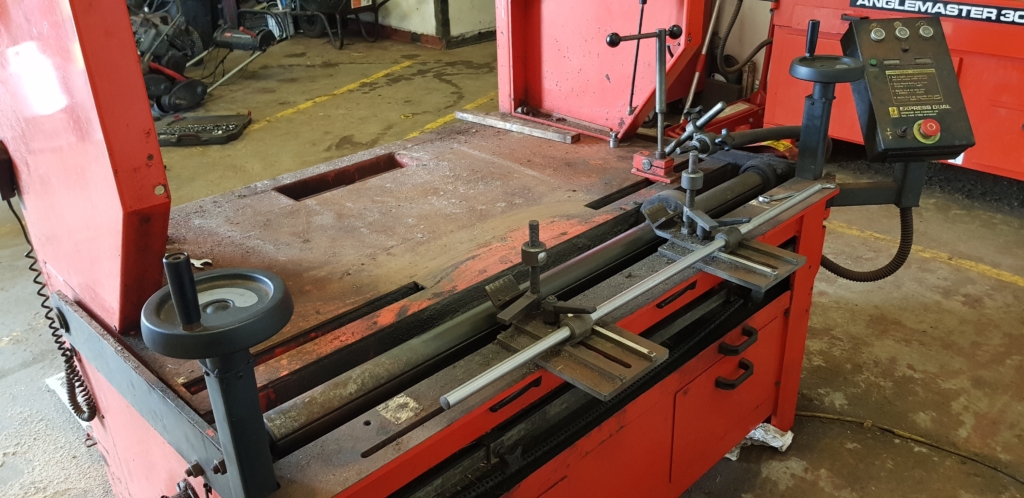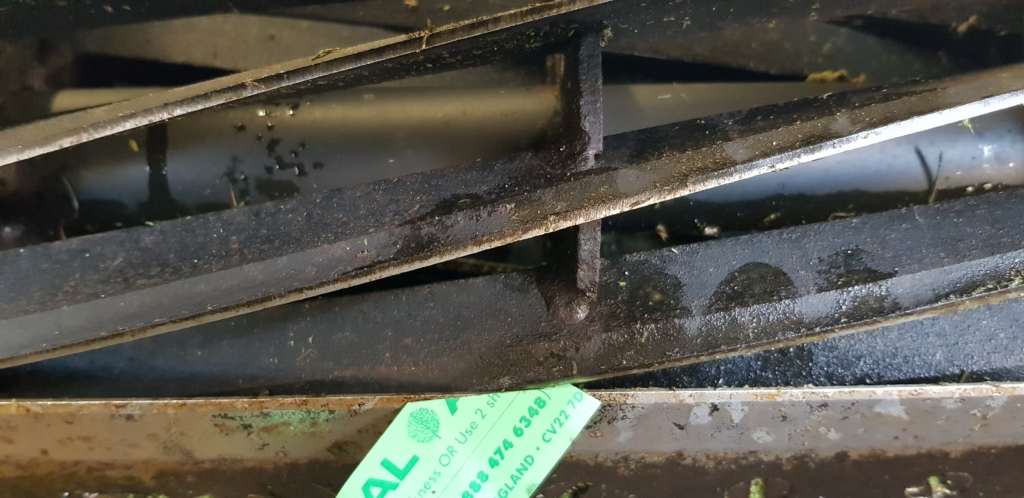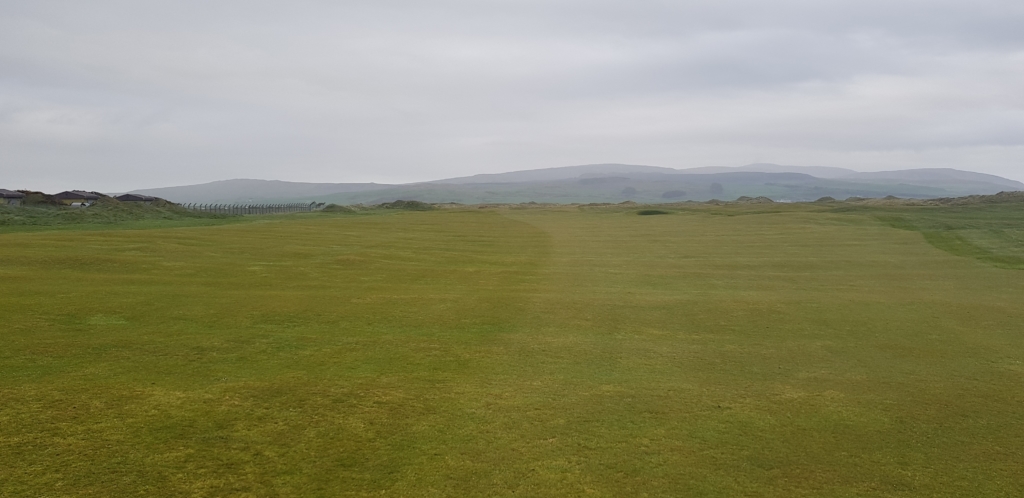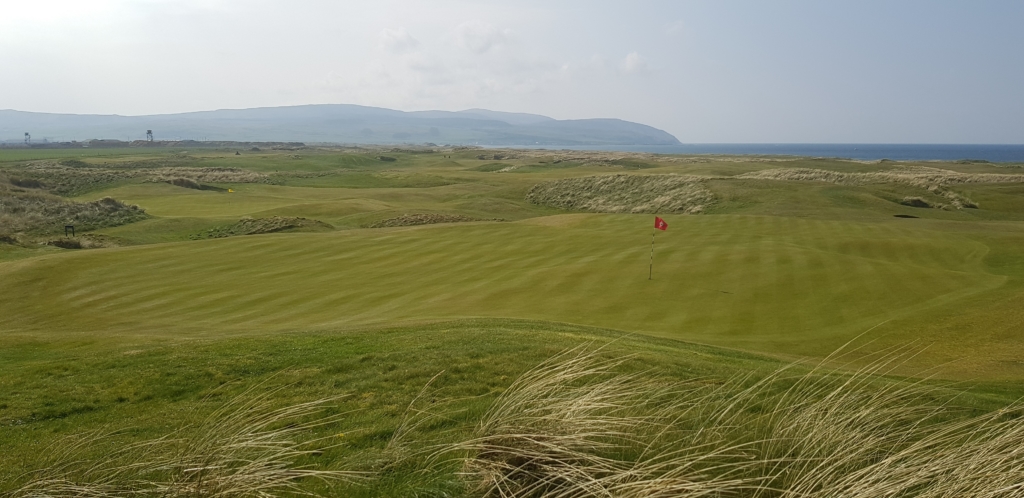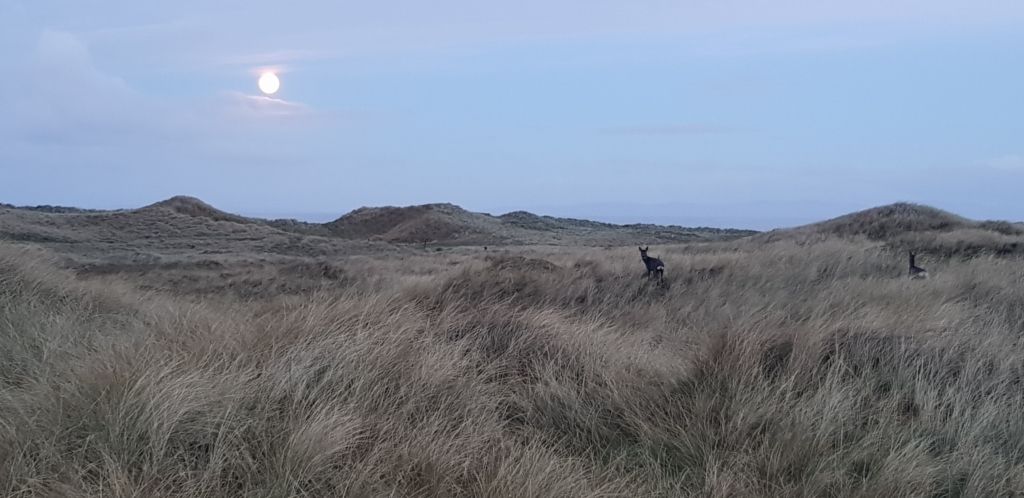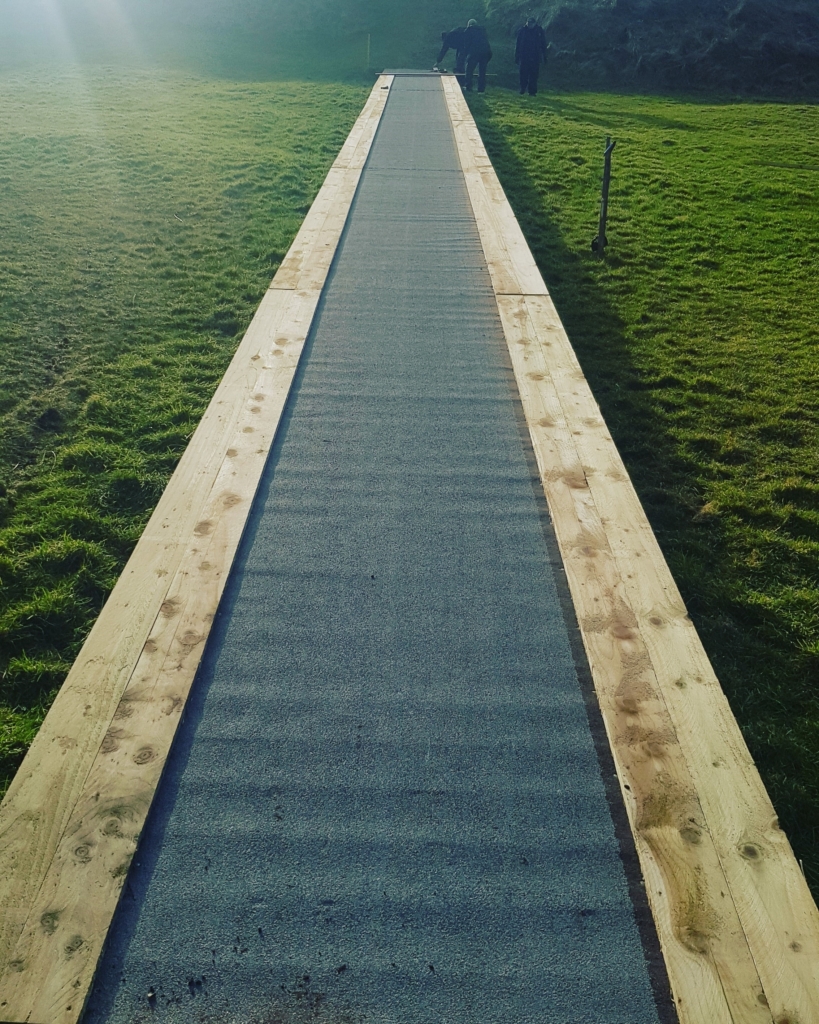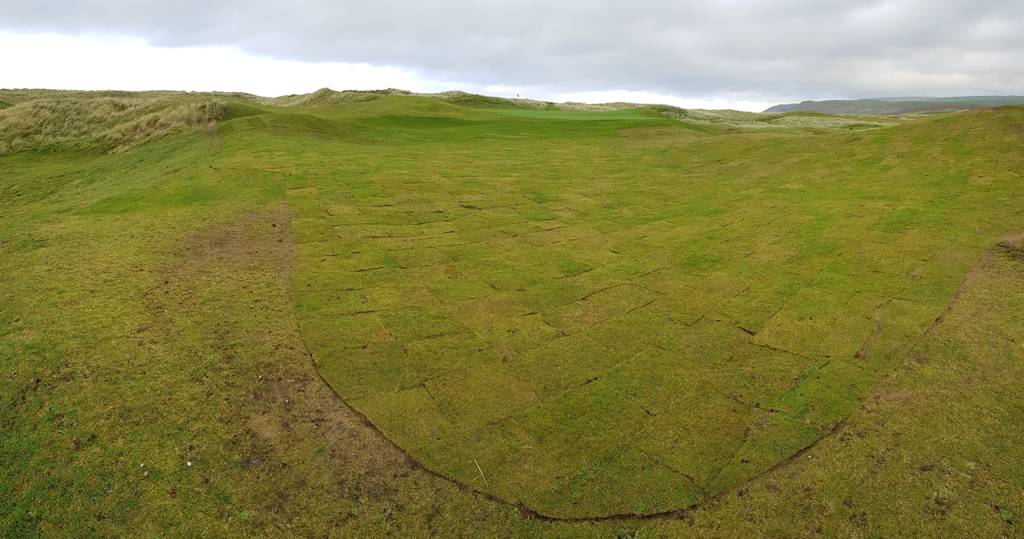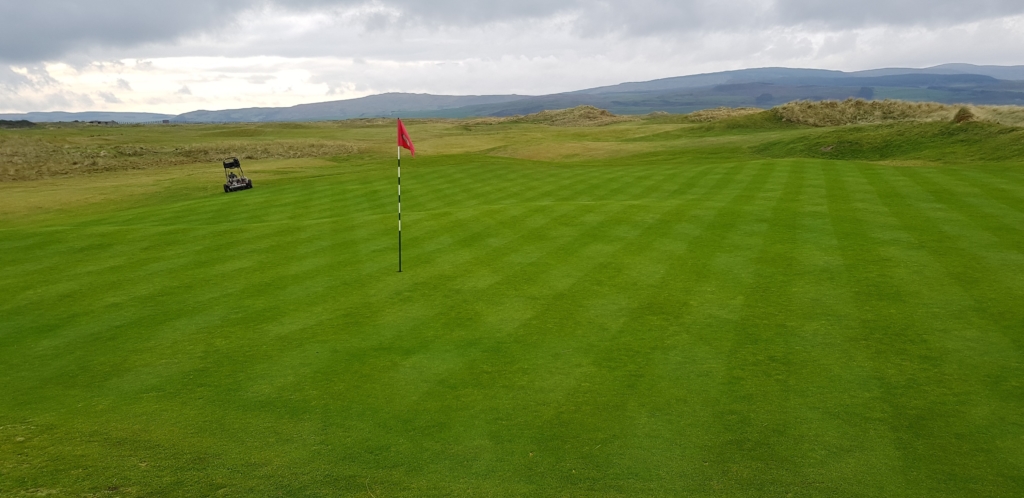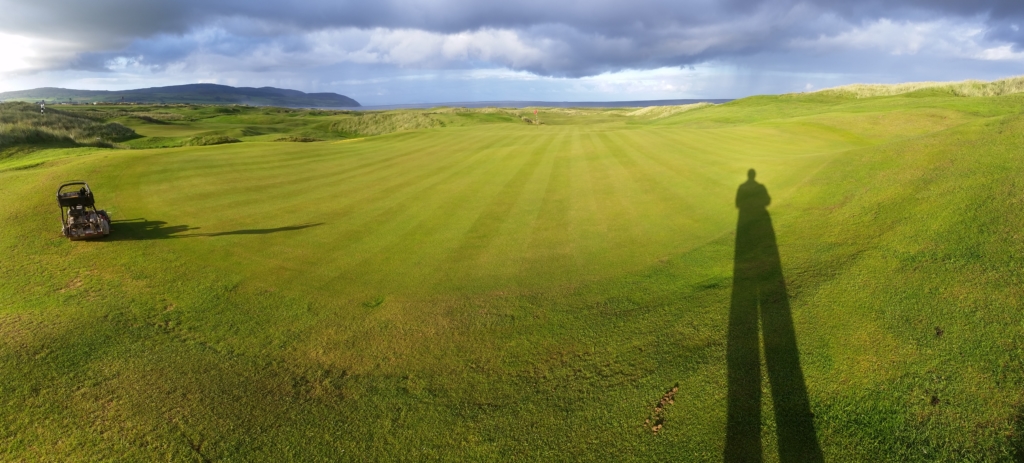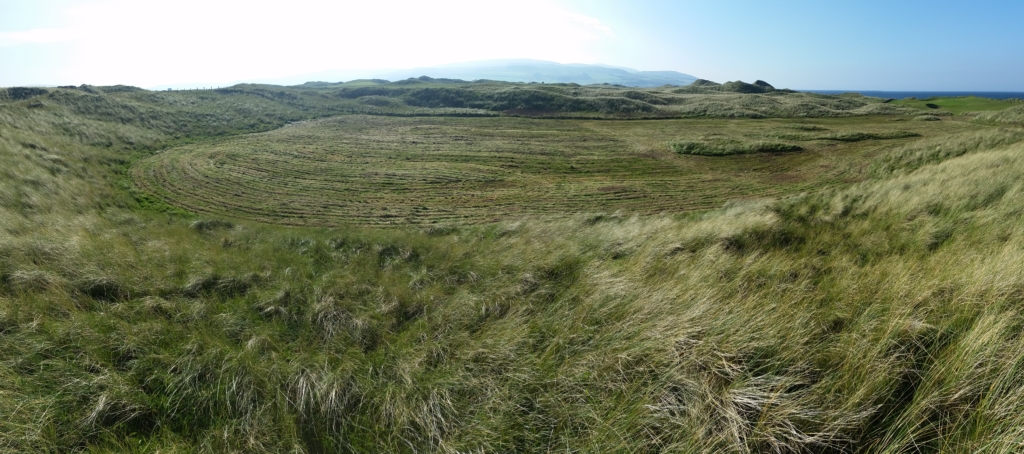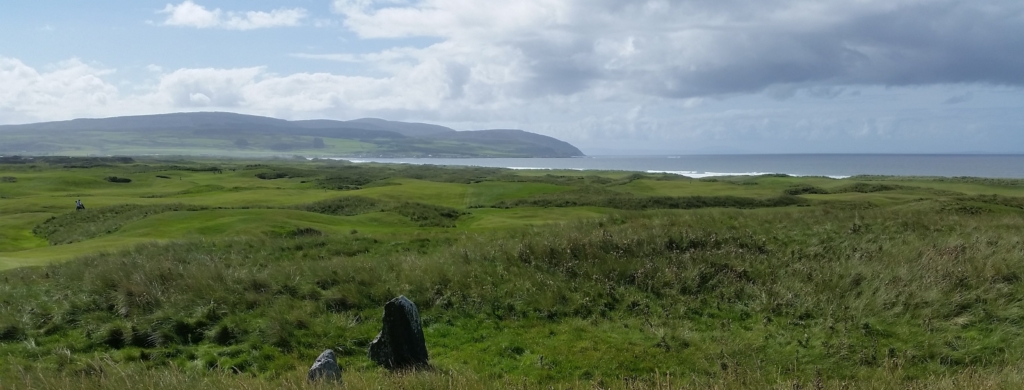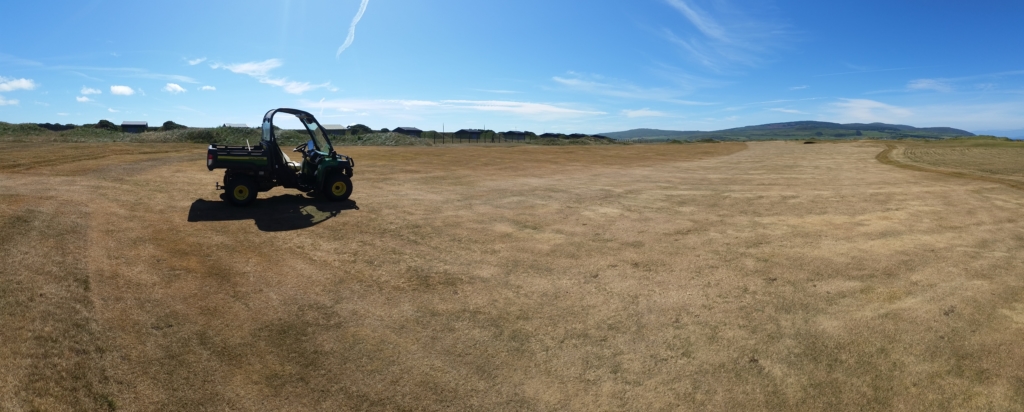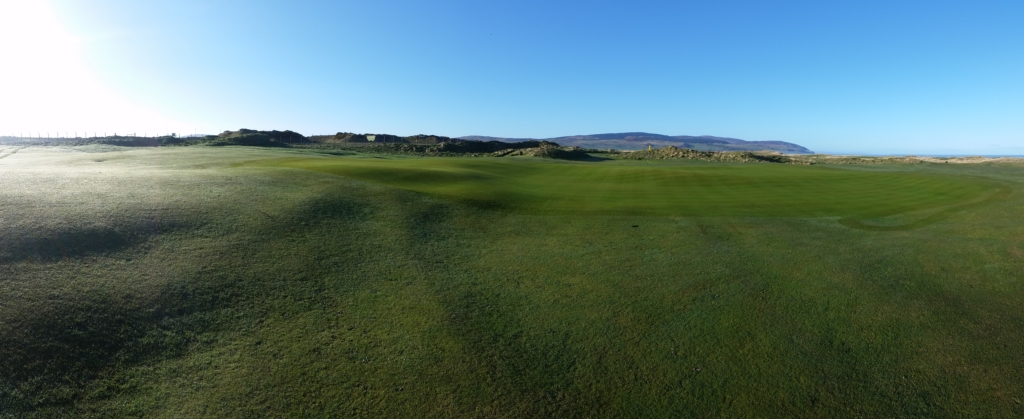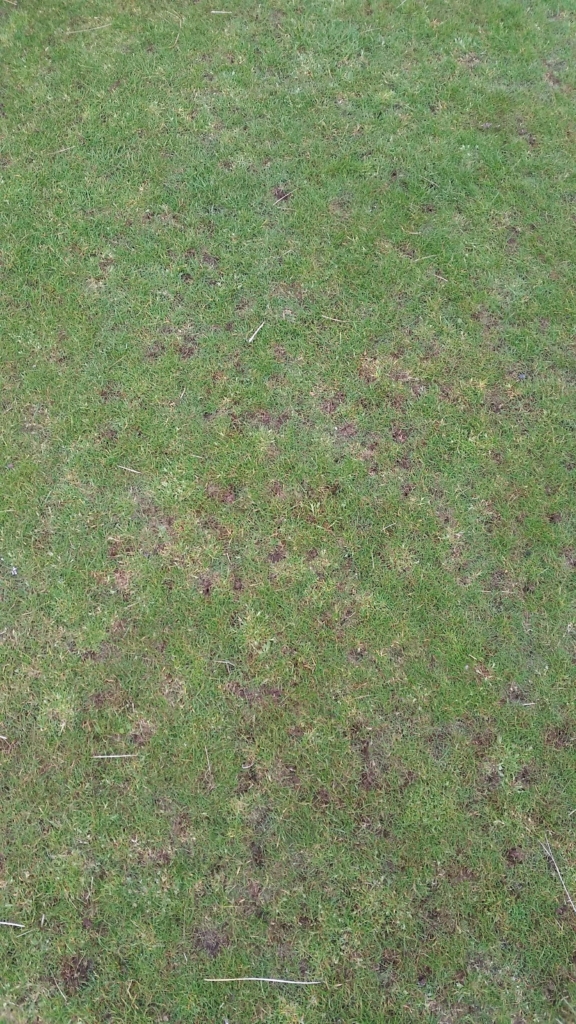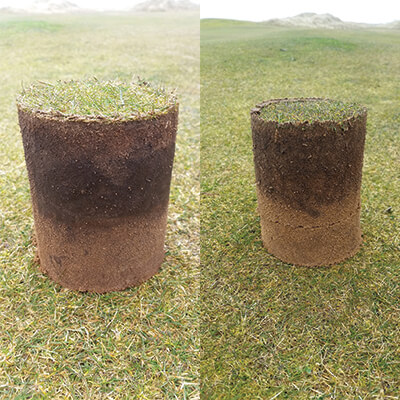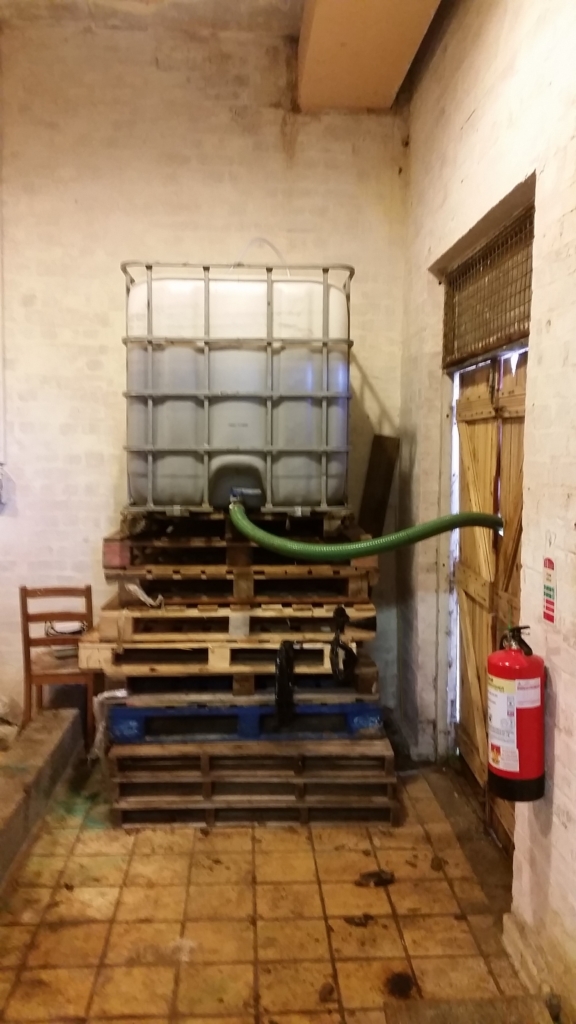What a Decidedly Average Summer!
We seem to love using superlatives to describe the weather in this country, and sometimes I wonder whether our propensity for the dramatic is down to our disappointment at having to live in a country where the climate is actually so depressingly average. Last year’s so-called (and extremely relative) drought seems a distant memory now as we muddle our way through what is turning out to be the most normal of years. Boring as it may be, it certainly makes the greenkeeper’s life a lot easier! After the stress of trying not to run out of water in 2018, we are back this year to cruising along, cutting grass and feeding, aerating and topdressing whenever the turf has a requirement for it. Maybe the hard times are yet to come. Perhaps once we get into August, high pressure from the Azores will build and drag warm air up and over us. We have definitely seen that happen in the past but it doesn’t tend to last for very long.

Fairy Rings – Friend or Foe?
An average summer such as this does give us a bit of leeway to push our turf in the direction we want it to go without fear of reprisals that might come our way should things dry out too much. One thing we have been doing this year is allowing the fairy rings that have appeared in a few of our older greens to grow unchecked, to the point where their presence has become quite noticeable. A few people have asked me about why these rings and patches have become so prevalent, and many of those people I have spoken to claim to have never seen fairy rings affect greens before. At first, I found that a little surprising because I remember fairy rings being a big issue when I was growing up around golf courses, but the more I thought about it, the more I had to agree that you don’t see them nearly as much these days. Why is that?
Fairy rings are formed by fungal bacteria that occur naturally in soil. You may well have seen dry “puffball” mushrooms growing on the fairways and in the rough, and you may have chuckled to yourself as you stood on them and watched them explode in a ball of what looks like dust. That dust is actually the spores produced by the fungus, and they blow in the wind until they land on an unaffected area of turf, where it is washed down into the soil. From there, the fungal bacteria spread outward through the upper portion of the rootzone, munching through excess organic matter and converting it to useable forms of nitrogen which feeds the grass. This is when we see fairy rings appearing. An army of bacteria is marching outward from a central point under our grass plants, utilising thatch as a source to produce food for our turf. The ring appears dark green at the outer edge of the area that the bacteria have reached because that is where they are finding a huge supply of food to further their mission, and as they convert all of that to nitrogen in a very short space of time, it actually over-feeds the grass. A lot remains unknown about exactly what is going on inside the confines of an existing fairy ring, but my guess would be that there is a large population of these bacteria still living there quite happily despite having used up the excess organic matter that provided them with the energy to push onwards and outwards. Organic matter is being dumped onto the surface of the rootzone all the time in the form of spilled clippings, dying grass leaves, animal droppings, etc, and all of that can be utilised by the bacteria that are residing there to keep themselves healthy. If this process goes unchecked over a long period of time, it would be logical to imagine that these fungal bacteria could conceivably produce a fairy ring big enough to cover an entire green. It is interesting to sit back and think about what that would mean for us as greenkeepers. Would it cause us issues, or would it actually be of huge benefit?

The main downside to managing fairy rings is hydrophobia. The bacteria excrete a waxy substance which can be incredibly difficult to re-wet if it is allowed to dry out, but my experience is that accumulations of this waxy substance are serious enough to be problematic only at the extremity of the ring (where it is dark green), and not in the centre where there is less ongoing fungal activity. It is thought that the bacteria also release gases which are harmful to grass, which may go some way to explaining why grass just outside the dark green ring can turn yellow and in extreme circumstances “burn” right out. It does seem that affected grass just outside the ring can be protected to a certain degree by keeping it fed and watered sufficiently to avoid a decline in its health, which makes fairy rings manageable during a summer such as this when mixed conditions ensure that moisture levels are relatively easy to manage. All these negative issues are centred on the portion of the ring where the bacteria are most active and are, therefore, only an issue while they are going to work on those unnaturally high reserves of excess organic matter. Once they have passed that point and moved outwards, that area which is now inside the ring seems to stabilise once again, as if a balance has been restored. So if we go back to our question then, would there be any downside to a green that had been completely engulfed by fairy rings to the point where the dark green ring was outside the perimeter of the putting surface? Might we find that the bacteria actually helped us to do our job? Does the lack of fairy ring activity on greens in this country mean that we have to do more mechanical work in order to control organic matter? And why do I remember seeing fairy rings on greens when I was a boy and why only now are we seeing them re-appearing on not only the greens at Machrihanish Dunes but on putting surfaces all over the country (did anybody notice them on Carnoustie’s greens during the Open last year, or more recently on the fairways at Royal Portrush?). So many good questions!
I think I’ll start in reverse order. I think the reason why fairy rings are once again becoming more prevalent is that government legislation has taken all of our most effective fungicides away from us. Although these products were highly effective at controlling the specific diseases they were designed to target, there is no doubt that using them as a crutch to control outbreak created an inert environment and a fungal wasteland, just as using strong insecticides to kill juvenile leatherjackets also kills pretty much every other living organism in the soil too. Could it be that the healthy greens of decades past (that for some reason didn’t seem to build up huge layers of pathogen-harbouring thatch which required to be cored out two or three times a year and constantly sprayed with fungicides) naturally contained healthy populations of the bacteria that we see causing fairy rings, among many other species? Were the rings themselves less prevalent because there was a steady source of food available to them which they then converted to plant food to keep the grass healthy, thereby promoting a continual positive natural cycle? The green rings that are the sign of a mass feeding frenzy at the outer extremity of a fungal colony may have been noted less often, because the sheer amount of food would not have been available to allow the bacteria to produce that much nitrogen, that amount of waxy excretion, and the level of gaseous by-products required to harm and eventually kill the grass outside of the ring. Have we possibly made a rod for our own back by applying fungicides that have killed off whole populations of bacteria that we didn’t even know that we needed? Did we unwittingly ruin a brilliantly balanced eco-structure that resulted in us building up huge layers of root-stifling thatch that we then needed to go and core back out and spray with more fungicides because it became such an unhealthy environment that only one grass species (poa annua) would grow in it? Even that species was so weak that it was constantly attacked by disease pathogens that lived unchecked in the rootzone because we had stupidly killed all its natural predators. What a bunch of idiots!
I know that life isn’t as simple as that. We greenkeepers are charged with maintaining grass in an extreme way in order to produce the best putting surfaces, to the point where we endanger its very survival on a daily basis. Consequently, we are bound to run into periods where it becomes so weak that root mass will suffer and plants become susceptible to disease and it is all too easy to succumb to the pressure that we feel under and just reach for a bottle containing the magic elixir that we know will fix whatever issue we are having at that particular time. In the past, I’ve even let fairy rings get on top of me during dry spells and sprayed them with an approved fungicide to give myself a break. That works, but as we move forward into a working environment that contains less and less of these artificial crutches that allow us to back ourselves out of corners that most of the time we have actually created ourselves, might we be better to learn to accept some superficial cosmetic defects on our putting surfaces, safe in the knowledge that we are allowing perfectly balanced natural processes to solve most of our underlying issues before they even become apparent?
I think a lot of us are guilty of giving into pressure that we put on ourselves rather than pressure that really does come from outside influences. Successful greenkeepers are invariably perfectionists and we really don’t like to see things like fairy rings or disease scars on our surfaces. Half the time, though, I don’t think the people happily playing on our greens even notice these things as they very rarely affect the run of the ball, and given the choice of accepting some visual imperfections or having to put up with weeks of recovery from yet another bout of holocoring, I think most players would readily vote for the former.
If only it were that cut and dried though. When you are relying on natural processes, you are never in full control, and that is why we have historically been so keen to revert to using science in an attempt to create an alternate environment that we believe that we can fully control. USGA spec greens are a classic example. The theory seems so obvious. Spread a layer of sand mixed with a very small amount of sterilised, inert soil over a carpet of gravel and land drains, turf that with a mixture of fescue and bentgrass and you will have greens that are easy to maintain and are as firm and fast as those at the seaside. Typically, these greens perform absolutely brilliantly in the UK for the first two years. Once the honeymoon period is over though, our damp, temperate climate helps thatch to start accumulating at a frightening rate because there are no bacteria in the sterilised “soil” to break it down, so the course manager is forced to mechanically remove material by holocoring. Once the ground is full of sand-filled holes, annual meadow grass seeds have got a perfect environment in which to settle and start to take over. The green that was initially cut at 5 or even as high as 6mm to favour the fescue and bent now has to be cut shorter so that the meadow grass is less noticeable and doesn’t negatively affect ball speed and roll. Fescue hates being cut short, so it dies out, leaving more gaps for more meadow grass. Meadow grass grown on a thatchy rootzone will inevitably be susceptible to disease, so it gets sprayed with fungicide, and this kills any beneficial bacteria that might have been trying to colonise the soil. I could go on indefinitely, but I’m sure you get my point. If you ignore soil biology, you create a negative spiral which requires that you do more disruptive work, which ruins surfaces and encourages annual meadow grass proliferation still further. If you favour soil biology and try whenever possible to help it to flourish naturally, then you should theoretically be able to stand back and watch as it does some of your job for you. The only problem is that you can’t control it; it will always be in charge. And that is a frightening prospect for any turf manager.
If it is alright with you, I think I will leave the fairy rings alone for just now. I’m interested to see what will happen!
Mushroom Farming
One more thing before I stop banging on about fairy rings. You may have noticed white mushrooms growing in the areas affected by the fungal bacteria. These mushrooms are the same puffballs that I mentioned earlier. If I were to leave these alone, they would turn from white to black, dry out and release spores which would help the bacteria to colonise new areas. Many varieties of fungus operate in the same manner, utilising the energy released from devouring whatever food source they prefer to produce fruiting bodies which further the cause of the species. Although I have openly come out in favour of leaving the fairy rings alone, I do consider the mushrooms to be something I could do without, and I have been picking them off the greens whenever possible. They develop and grow incredibly quickly though, so it is almost impossible to keep on top of all of them. Please bear with us.

Tournament Round-Up
It is far too long since I sat down and wrote one of these updates, so I now have a lot to tell you about! The 2019 edition of the Campbeltown Open was an eventful affair, with an unfortunate interruption for a huge thunderstorm on the first day. The second round was played in more “normal” conditions, and this helped George McMillan to a one-stroke victory in the men’s scratch. David McLean finished runner-up, with Kevin Brunton 3rd and Bobby Willan in 4th. The gent’s handicap section was won by Kevin Brown.

The ladies Campbeltown Open was won by Anne Laing, with Lyndsay Mathie finishing runner-up.

Our club championships were contested the week after the Campbeltown Open, with Gary Sheppard retaining the men’s scratch trophy and Iain Logan winning the handicap section. The ladies scratch was won by Ailie MacBrayne, while Elizabeth Marrison scooped the handicap prize.


As I write this, the Shepherd’s Cross/David Irwin memorial trophy has just been contested and I am delighted to report that this was won by a team containing some of David’s closest golfing friends…

The next competition on the Machrihanish Dunes calendar is the Black Sheep Cup, which is being held this year on Sunday 25th August. This inclusive stableford event is open to all gents and ladies aged 16 and over and is sure to be very popular once again. If you are interested in booking a tee time for the Black Sheep Cup, then I recommend you phone Lorna or Peter at the Golf House (01586810058) at your earliest opportunity.
Enjoy your golf in August, everybody!
